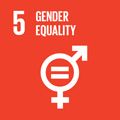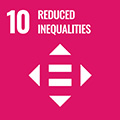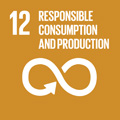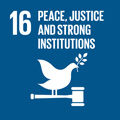- Docente: Marco Milani
- Credits: 6
- SSD: SPS/14
- Language: Italian
- Teaching Mode: Traditional lectures
- Campus: Bologna
- Corso: Second cycle degree programme (LM) in Information, Cultures and Media Organisation (cod. 5698)
-
from Sep 20, 2022 to Oct 27, 2022
Learning outcomes
The course analyses the evolution of the communication and media landscape in Asia with specific attention to the interaction with the social and political sphere, analysing the role played by mass media in building up consensus in several different national contexts in East Asia. At the end of the course students will: - master the theoretical and methodological instruments to understand the interaction between the media and the political-institutional spheres in Asia - know the historical evolution of the main Asian national contexts - is able to analyse the implications that the media system has produced on the ways of gaining political consensus in the different Asian national contexts - is able to apply the acquired knowledge to the analysis of electoral campaigns and of contemporary communication processes - is able to analyse the main political and social implications produced by the development of mass media in Asia.
Course contents
The course Media and Communication in Asia aims at introducing, analysing and understanding the main issues regarding media and communication in East Asia, with a specific attention to the effects on the political and social sphere. The course aims at providing a broad overview on the historical evolution of media and forms of communication in East Asia and how these have been influenced by and have influenced the social and political processes in the region. The course will examine a wide variety of media languages, forms of media consumption and cultural production, including TV, film, music, social media, animation, video games. The cultural context will be that of East Asia and in particular the Korean peninsula, Japan, the People’s Republic of China, Taiwan, and Hong Kong. During the course we will explore different issues related to the interaction between the media and communication landscape and the socio-political sphere, such as: propaganda and state control, politics of representation, media production and consumption, globalization, orientalism and techno-orientalism, transnational cultural exchanges, media and nationalism, transformations connected to the creative and cultural industries, and the role of social media. In this context a specific attention will be reserved to the interactions between media, society and politics in contemporary Korea. In this way we will be able to build an historical path aimed at exploring the evolution of the media and communication landscape and the changes that have occurred in contemporary East Asia.
The organization of the course is based on the active and constant participation of students, which does not end with attending in the classroom, that constitutes a fundamental part of the final evaluation.
The course is divided into two parts:
The first part will comprise a series of introductory lectures about contemporary East Asian history, with specific reference to the Korean peninsula, on the evolution of political and social systems in the main countries of the region and on the main concepts and approaches that will be used throughout the rest of the course for the analysis of specific issues. This part will serve to create a solid foundation of knowledge and skills to analyse the specific media and communication processes and their interactions with the political and social sphere.
The second part will be reserved to the analysis of specific issues and themes of particular relevance in the context of the interactions between the media and communication systems and the political and social sphere of the different countries. The issues to be taken into account are:
- Propaganda and the role of the State in communication processes;
- Media, Nation and Nationalism;
- Soft power, cultural diplomacy and nation branding;
- The evolution of cultural production and creative industries;
- Pop culture and media in East Asia;
- The ‘Korean Wave’ (Hallyu);
- Social media, new media and digital platforms in East Asia;
- Orientalism and techno-orientalism
The analysis of these issues will include an introductory lecture, followed by the collective debate in the classroom, based on the assigned readings and other specific audio-visual materials; for this reason it is absolutely essential to do all the readings before coming to class.
Readings/Bibliography
The list with all the required readings will be provided at the beginning of the course and all the readings will be made available in electronic format.
The historical-political framework of reference will be provided in the first lectures of the course. However, for a general overview of the history of contemporary East Asia, we recommend reading one – or more – of these books:
- Antonio Fiori, Marco Milani, Andrea Passeri (2022). Asia. Storia, Istituzioni e Relazioni Internazionali. (Firenze: Le Monnier Università). Parte prima, capitoli: 1, 2 e 5; parte seconda, capitoli: 1, 2, 5 e 6; Parte terza, capitoli: 1, 4 e 6; parte quarta, capitoli: 1, 3, 4 e 6; parte quinta, capitoli: 1, 2, 5 e 6.
- Alice Lyman Miller and Richard Wich (2011). Becoming Asia: Change and Continuity in Asian International Relations Since World War II. (Stanford: Stanford University Press).
- Timothy C. Lim (2014). Politics in East Asia: Explaining Change and Continuity. (Boulder: Lynne Rienner).
For e general overview of the issues and processes related to media, communication and popular culture in East Asiawe recommend the following books:
- Daniel Black, Olivia Khoo and Koichi Iwabuchi (2016). Contemporary Culture and Media in Asia. (Lanham: Rowman & Littlefield).
- Koichi Iwabuchi, Eva Tsai and Chris Berry (2017). Routledge Handbook of East Asian Popular Culture. (Abingdon: Routledge).
- Nobuko Kawashima and Hye-Kyung Lee (2018). Asian Cultural Flows: Cultural Policies, Creative Industries and Media Consumers. (Singapore: Springer).
The recommended readings are not mandatory, but they represent an important resource to familiarize with the history, politics and media and communication landscape of East Asia.
Teaching methods
The course will be a mix of lectures, class discussions, presentations, short videos and other audio-visual materials. The active participation of students is a key component of the course and will be part of the final evaluation.
Assessment methods
Considering the importance of active class participation attendance is strongly recommended.
ATTENDING STUDENTS:
Class participation + assignment + discussion
In addition to active class participation during the course, attending students will present an assignment on a theme, key concept or issue raised in the course, or related to them (in this case it should be cleared with the professor). The assignment can be a short research paper (3000 words) or a “creative assignment” in non-traditional format: photo essay, video or audio-visual essay, academic poster, brief podcast (other non-traditional format can be used but it should be cleared with the professor in advance). More details about the assignment will be given during the first lecture and will be the object of specific sessions during the course.
The assignment will be discussed together with questions about the topics and issues of the course.
NON-ATTENDING STUDENTS:
Oral exam
For non-attending students the assessment will take place through oral exam on the topic of all the required readingsfrom the reading list, plus one of the books on contemporary East Asian history (Antonio Fiori, Marco Milani, Andrea Passeri. Asia. Storia, Istituzioni e Relazioni Internazionali, only the chapters indicates; or Alice Lyman Miller e Richard Wich Becoming Asia: Change and Continuity in Asian International Relations Since World War II) and one of the following books Asian Cultural Flows: Cultural Policies, Creative Industries and Media Consumers by Nobuko Kawashima and Hye-Kyung Lee and Routledge Handbook of East Asian Popular Culture by Koichi Iwabuchi, Eva Tsai and Chris Berry.
The ability to present key issues and topics regarding East Asian media and communication using a specific language, showing critical awareness and connecting them to the political, social and cultural contexts will result in an excellent evaluation. A purely notional knowledge with little analysis and a correct but not specific language will result in a fair evaluation. An incomplete knowledge or inappropriate language will result in a pass evaluation. Important gaps in key themes and issues, inappropriate language and inability to use key concepts and approaches will result in a negative evaluation.
Teaching tools
Specific readings on the covered topics, slides, images and short videos, audio-visual materials.
Office hours
See the website of Marco Milani
SDGs




This teaching activity contributes to the achievement of the Sustainable Development Goals of the UN 2030 Agenda.
